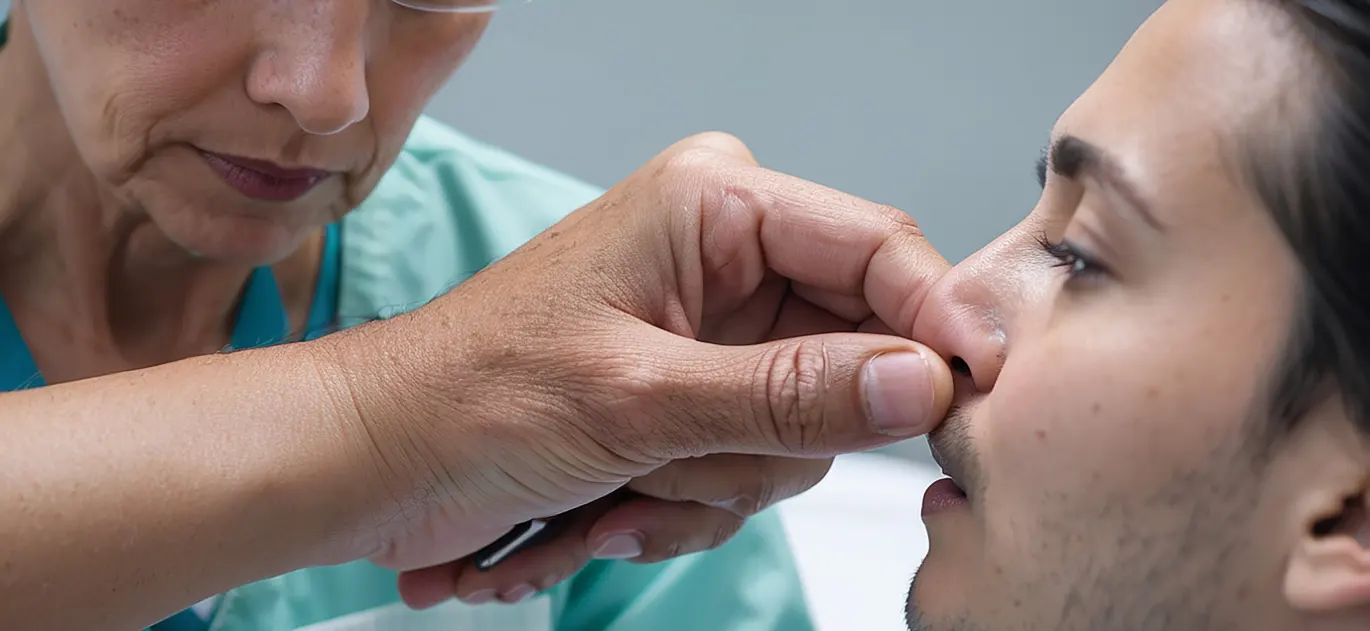- Home
- Treatments
- Rhinology
-
Deviated Nasal Septum (DNS)
Deviated Nasal Septum (DNS)

When a thin wall present between the nasal passages is displaced or deviated is called a Deviated Nasal Septum. Deviations may be slight with no symptoms or very marked with the obstruction of the nasal cavity.
Causes of Deviated Nasal Septum
- Physical - Any injury to the wall of the nose may result in the displacement of the cartilage.
- Dentition - During the primary and the secondary dentition, in order to accumulate the teeth the Palate widens resulting in DNS.
- Hereditary Factors - Some families have genetically inherited the DNS.
Types of Deviated Nasal Septum
- Anterior deformity - The septal cartilage may be dislocated or one of the nasal chambers is fractured.
- C - Shaped deformity - In this the septum deviates to one side, and the other side may be wider and show some growth.
- S- Shaped deformity - Here septum shows an S-shaped curve. It may cause both nasal obstructions.
- Spurs - It is a shelf-like projection at the junction of the bone and cartilage.
Symptoms of Deviated Nasal Septum
Most common symptoms include nasal obstruction, other common symptoms are headache, sinusitis, nose bleeding, facial pain, abnormal sounds during breathing, preferring to sleep on one side, anosmia and secondary complications may also include middle ear infections.
Treatment for Deviated Nasal Septum
ENT Treatment depends on the type of deviation involved, if the deviation is slight with not many symptoms, then no treatment is necessary. If there is mechanical obstruction with difficulty in breathing then our ENT Doctor in Coimbatore opts for Septoplasty. In this procedure, the septum is either straightened or repositioned to the middle of the nose is performed by the surgeons in our ENT Hospital in Coimbatore. In children with DNS conservative septal surgery methods are adopted.
Rhinology
(Nose & Sinus)
Nose
Treatments

Allergy clinics are specialized allergy treatment centers in India, mainly concerned for allergy testing and immunotherapy. Allergy clinics have become the best lifeline for the treatment of allergies. Allergy clinics are working round the clock for the patient’s well-being by providing a specific place and specific treatment by the specialized and well trained ENT doctors. Allergy clinics deal with the diseases like Allergic Rhinitis, Allergic cough, Asthma and any skin related allergies.
Allergy Clinic

It is a condition of noisy breathing while you sleep. During sleep, the pharyngeal muscles relax and the size of the lumen is reduced leading to the airway obstruction, causing vibration of the sounds snoring. It may affect any age group from infancy to aged persons. It is found that snoring is related to daytime dysfunction and heart disease. In most cases, spouse or the relative sleeping next to the affected person is more affected than the snoring person himself.

